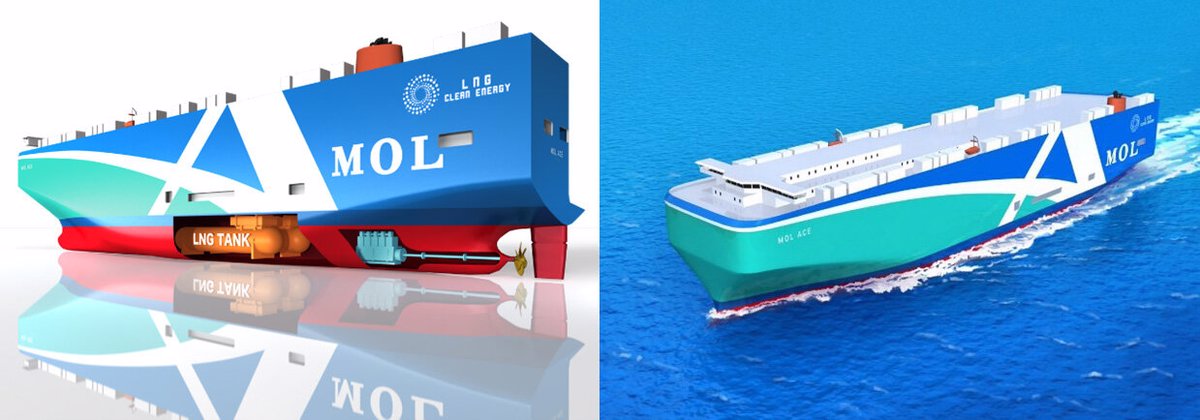MOL looking to bunker LNG-fuelled vessels with liquefied biomethane
Mitsui O.S.K. Lines (MOL) and industrial gas supplier Air Water will explore ways to transport and supply liquefied biomethane (LBM) with existing infrastructure to eventually fuel MOL's vessels.
 PHOTO: MOL announced a new "blue" series hull colour design for its LNG-fuelled car carriers in January. Mitsui O.S.K. Lines
PHOTO: MOL announced a new "blue" series hull colour design for its LNG-fuelled car carriers in January. Mitsui O.S.K. Lines
LBM or bio-LNG is a biofuel produced by processing organic wastes from household and industries, manure and sewage sludge.
“LBM is made by liquefying bio-methane at about -160°C generated from dairy-owned biogas plants, separating and refining its main component, methane,” explains MOL. Anaerobic digestion of organic waste produces biogas, which contains methane.
Biomethane is formed by separating carbon dioxide (CO2) and some contaminants out from biogas. The resultant biomethane can then be liquefied to LNG and function as a drop-in fuel in LNG - much like biofuels have been blended with VLSFO or MGO in an increasing number of recent trials by shipowners.
The LBM for MOL's vessels will be produced by Air Water from cattle manure in Japan's Tokachi region.
“Methane can be compressed to 1/600th of its volume by liquefying it, so this enables the mass transportation of methane. It is also a carbon-neutral domestic energy source because it is made from cattle manure,” says MOL.
The Japanese duo will test the fuel on MOL's coastal LNG-fuelled vessels in the first half of this year, with the ultimate goal of commercial consumption by those vessels. According to MOL, this will be the first time LBM will be used as a marine fuel in Japan.
“Since the introduction of LNG-fuelled vessels is an effective way to achieve low carbon emissions in this early stage, MOL is accelerating the deployment of LNG-fuelled vessels while taking initiatives aimed at early introduction of the use of bio-methane and synthetic-methane,” MOL says.
On the supply side, the Netherlands-based LNG bunker supplier Titan is in the process of building what is set to become the world’s biggest biomethane liquefaction plant in Amsterdam. This plant will have capacity to produce 200,000 mt/year of LBM straight away when it is expected to come into operation in 2025, without any phasing.
By Konica Bhatt
Please get in touch with comments or additional info to news@engine.online





